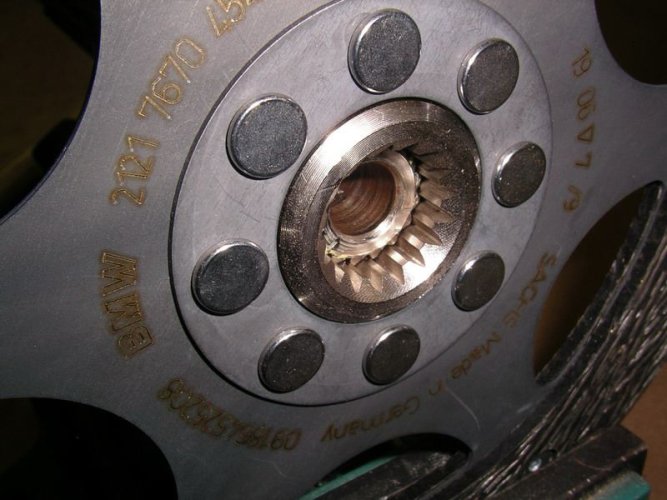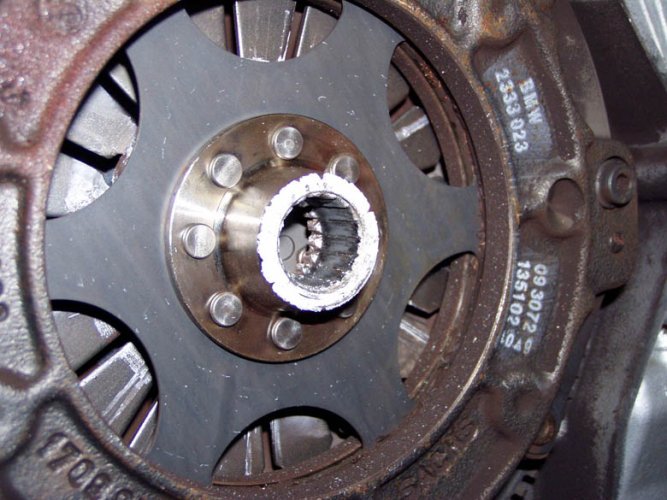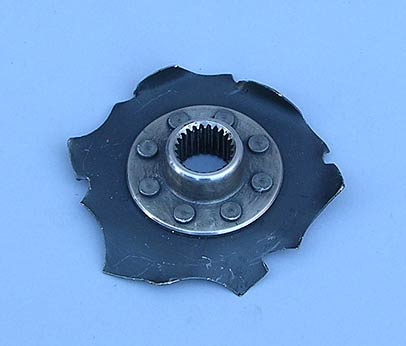gsaddict
Pepperfool
The reason shaft wear is tapered is that the flex plate is near that end of the spline hub, concentrating and reacting any radial load there.
There is no resonance related problem here. I designed several high speed spinning torsional vibration test stands for the auto industry before retirement.
No disrespect here but you are aware that the flex plate is centered past the end of the input shaft?
The engine turns clockwise viewed from the front.
How do you explain the wear on the left side of the shaft spline further down.
Why are the hub splines typically worn evenly along their length?
Unless......this wear happens on deceleration? I can't see that.
.






 Reminds me of the driving range, sometimes I can do no wrong and other times.......
Reminds me of the driving range, sometimes I can do no wrong and other times.......